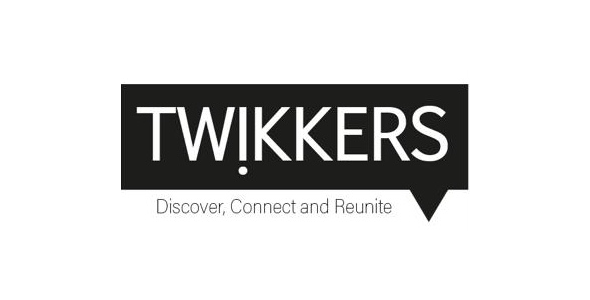Insulation Products Market - Overview
The global insulation products market is driven by the increased aesthetic value in construction and reduced heating & cooling costs. There is an increased usage of insulation products due to the increased energy saving practices which have resulted in reduced greenhouse emissions. The increased demand for insulation products is also driven by the growing application across residential and non-residential construction.
Global Insulation Products Market is segmented on the basis of insulation type, materials, application, and region. On the basis of Material used it is segmented as Mineral Wood, Plastic foam, Fiberglass, and Others. On the basis of Application it is segmented as Residential, Commercial, Industrial and Others. On the basis of type it is segmented as Thermal, Acoustic Vacuum and Others. Additionally on the basis of Region, it is segmented as North America, Europe, APAC and Rest of the World.
Insulation, being an important technology and its utilization in reducing energy consumption in buildings by preventing heat gain/loss through them have gained popularity over years, especially in emerging nations. Climatic conditions often influence the type of insulation. There are various materials used for insulation which have low thermal conductivity, often less than 0.1W/mK. Polyurethane foam, mineral wool, polyethylene, polyvinyl chloride, expanded polystyrene, and extruded polystyrene are the various types of insulation materials. These materials have no purpose other than to save energy and protect and provide comfort to occupants.
Request To Free Sample@ https://www.marketresearchfuture.com/sample_request/1881
Global Insulation Products Market - Competitive Analysis
The market is seen driven by leading players in the insulation materials market and the players have adopted various strategies to expand market share. The market is expected to gain popularity and thus lot of small and medium sized firms are seen entering the market. Furthermore the collaboration with various new technology concepts of smart building and green building have induced the market growth.
ecoSPEARS announced today that it received an exclusive license from NASA to use their Sorbent Polymer Extraction and Remediation System (SPEARS) to permanently clean up the world’s most pervasive and persistent toxins, including polychlorinated biphenyls (PCBs), from water and land. Developed in 1929, PCBs were widely used across the world as a flame retardant in everyday goods, including in the insulating material in electrical equipment such as transformers and capacitors, and also in heat transfer fluids and lubricants.
Mitsubishi Electric Corporation announced that it would launch a new integrated Station Energy Saving Inverter (S-EIV) with 400V AC-output for converting surplus regenerative energy from train braking into AC electricity for station facilities. The new 400V AC S-EIV facilitates easy installations and more energy-efficient operations, even at train stations with high-load demands of 400V power distribution circuits. The company also announced that the new S-EIV will be installed at Tokyo Metro Co. Ltd. train stations serving urban Tokyo. The new S-EIV offers 400V AC-output with the same dimensions as its 200V AC predecessor. Also, its new multifunctional step-up transformer acts as a filter reactor to reduce harmonics in AC output. Front access for easy cabling and maintenance enables diverse installation options.
BASF and SoloPower Systems, a photovoltaic technology company, today officially launched the seamless and multi-layered roofing system that is an interface between a building and the environment. The development of the multi-layered system promises considerable opportunities for cost-effective energy generation and energy saving. It combines energy efficiency, power generation, waterproofing and water harvesting, which adds proven value to the bottom line of manufacturing, industrial and commercial businesses.
Global Insulation Products Market - Regional Analysis
The North American region leads with highest share in the building thermal insulation market in 2016, in terms of value. The increased concerns over improving efficiency in buildings and the growing demand for green buildings have driven the demand for building thermal insulation in the region. Furthermore the growth in private construction in the US due to the demand for single-family homes is another factor that drives the demand for building thermal insulation material.
The strict building codes and regulations in Europe and North America, along with the popularity of Nearly Zero Energy Buildings (NZEB) globally, drive the demand for insulation products market.
However major investment in Insulation Products market is seen in APAC countries. The region is expected to witness staggering growth in the forecast period. The governments are seen promoting the concept and also offer flourishing markets to the international companies to push the market. The region is seen investing in construction industry along with technology and material to enhance the solutions in the industry. This is expected to drive the fast growth in the region.
Browse Key Industry insights spread across 140 pages with 41 market data tables & 20 figures & charts from the Report, “Insulation products Market Information by Insulation Type (Thermal, Acoustic Vacuum and Others), by Materials (Mineral Wood, Plastic foam, Fiberglass, and Others) by Application (Residential, Commercial, Industrial and Others) and by Region - Forecast to 2027” in detail along with the table of contents@ https://www.marketresearchfuture.com/reports/insulation-products-market-1881
Global Insulation Products Market - Segments
Global Insulation Products Market is segmented in to 4 Key dynamics for an easy grasp and enhanced understanding.
Segmentation By Insulation Type : Comprises – Thermal, Acoustic Vacuum and Others
Segmentation By Material : Comprises – Mineral Wood, Plastic foam, Fiberglass, and Others
Segmentation By Application : Comprises – Residential, Commercial, Industrial and Others
Segmentation By Regions : Comprises Geographical regions - North America, Europe, APAC and Rest of the World
